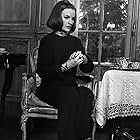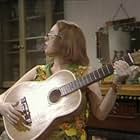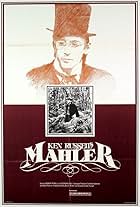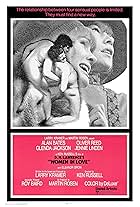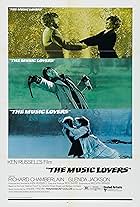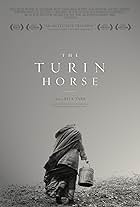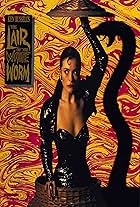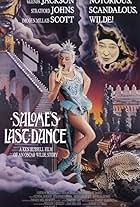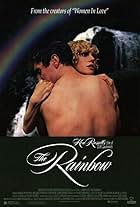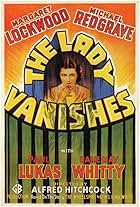IMDb RATING
7.3/10
298
YOUR RATING
The outrageous life of the American dancer of the 1920s, Isadora Duncan, whom Ken Russell described as "part genius and part charlatan".The outrageous life of the American dancer of the 1920s, Isadora Duncan, whom Ken Russell described as "part genius and part charlatan".The outrageous life of the American dancer of the 1920s, Isadora Duncan, whom Ken Russell described as "part genius and part charlatan".
- Awards
- 1 win
Photos
Alexei Jawdokimov
- Sergei Yessenin
- (as Alex Jawdokimov)
Mark Allington
- John (footman)
- (uncredited)
Peter Brayham
- Policeman
- (uncredited)
Lucinda Curtis
- Girl in dressing room
- (uncredited)
Billy Dean
- Policeman
- (uncredited)
George Fisher
- Policeman in stage
- (uncredited)
Elaine Hatfield
- Harpist
- (uncredited)
Alistair Mcfarland
- Footman
- (uncredited)
Judith Paris
- Young Isadora
- (uncredited)
Nosher Powell
- Policeman
- (uncredited)
Al Raymond
- Footman
- (uncredited)
Storyline
Did you know
- TriviaAccording to Eric Idle, he and two other future members of Monty Python (Terry Jones and Michael Palin) are among the band members on top of a hearse in an early scene. This occurs approximately a minute and thirty seconds into the film and only lasts for a moment.
- ConnectionsEdited from Olympia Part One: Festival of the Nations (1938)
Featured review
This is my pick for the greatest biographical film of all time. Shot in grainy black and white, on an undoubtedly shoestring budget, for the BBC back in 1966, it still has the technical advantage of being on film rather than videotape (as was the habit of British television at the time).
ISADORA (as it was known, simply, in its American TV showings -- and on its title card) has got everything that led to Ken Russell's reputation as the most innovative and outrageous filmmaker of the late 1960's: mad pacing, undisguised slow cranking, scattershot out-of-sequence editing, an anachronous 1960's pop approach to an early 20th century subject, over-the-top performances, etc, etc, and the refusal to represent Isadora Duncan as any sort of divinely-inspired artiste.
Rather, Russell's Isadora is a mad force of nature on a rampage, cutting a swath through America, Europe, Russia and back through America to Europe again -- browbeating everyone in her path to accept her form of expression as the only valid choice in the world of dance. She devours men like a praying mantis and leaves no one unscathed in her path, all the while consuming herself from the inside out. Though not pretty, she is irresistable; not graceful, her dancing is mesmerizing; not at all nice, she is vulnerable and even lovable. By sheer force of will, she imposed a new esthetic on modern dance and made the world take it seriously -- to become one of the most famous figures in the history of the arts.
Coming from the same home town area (San Francisco), I formed an early interest in Isadora Duncan, having first heard of her in my late teens, just prior to the time this TV film and Karel Reisz' big-budget biopic emerged. This one aired first and left me spoiled to appreciate the sanguine pinings and hand-wringing that vitiated Reisz' bigger effort with Vanessa Redgrave. Redgrave didn't have much of a chance of living up to my expectations, anyway, in conveying Isadora's power and importance, let alone her emotional makeup, since I had already seen it done in what I still consider to be the single best screen performance by an actress -- EVER! -- in Vivian Pickles' interpretation of her. Most people likely only remember Pickles as Bud Cort's hillariously horrifying mother in HAROLD AND MAUDE, but anyone lucky enough to have seen her here knows what a tragedy it is that the movies never found a far greater place for her as a leading actress.
When Pickles shouts the immortal words, "Au revoir mes amis, je vais a la gloire!," her gusto truly adds to the delight of hearing one of the most famous exit lines of all time (apocryphal or not).
ISADORA (as it was known, simply, in its American TV showings -- and on its title card) has got everything that led to Ken Russell's reputation as the most innovative and outrageous filmmaker of the late 1960's: mad pacing, undisguised slow cranking, scattershot out-of-sequence editing, an anachronous 1960's pop approach to an early 20th century subject, over-the-top performances, etc, etc, and the refusal to represent Isadora Duncan as any sort of divinely-inspired artiste.
Rather, Russell's Isadora is a mad force of nature on a rampage, cutting a swath through America, Europe, Russia and back through America to Europe again -- browbeating everyone in her path to accept her form of expression as the only valid choice in the world of dance. She devours men like a praying mantis and leaves no one unscathed in her path, all the while consuming herself from the inside out. Though not pretty, she is irresistable; not graceful, her dancing is mesmerizing; not at all nice, she is vulnerable and even lovable. By sheer force of will, she imposed a new esthetic on modern dance and made the world take it seriously -- to become one of the most famous figures in the history of the arts.
Coming from the same home town area (San Francisco), I formed an early interest in Isadora Duncan, having first heard of her in my late teens, just prior to the time this TV film and Karel Reisz' big-budget biopic emerged. This one aired first and left me spoiled to appreciate the sanguine pinings and hand-wringing that vitiated Reisz' bigger effort with Vanessa Redgrave. Redgrave didn't have much of a chance of living up to my expectations, anyway, in conveying Isadora's power and importance, let alone her emotional makeup, since I had already seen it done in what I still consider to be the single best screen performance by an actress -- EVER! -- in Vivian Pickles' interpretation of her. Most people likely only remember Pickles as Bud Cort's hillariously horrifying mother in HAROLD AND MAUDE, but anyone lucky enough to have seen her here knows what a tragedy it is that the movies never found a far greater place for her as a leading actress.
When Pickles shouts the immortal words, "Au revoir mes amis, je vais a la gloire!," her gusto truly adds to the delight of hearing one of the most famous exit lines of all time (apocryphal or not).
Details
- Release date
- Country of origin
- Language
- Also known as
- Isadora Duncan, the Biggest Dancer in the World
- Production company
- See more company credits at IMDbPro
- Runtime1 hour 5 minutes
- Color
- Sound mix
- Aspect ratio
- 1.33 : 1
Contribute to this page
Suggest an edit or add missing content



